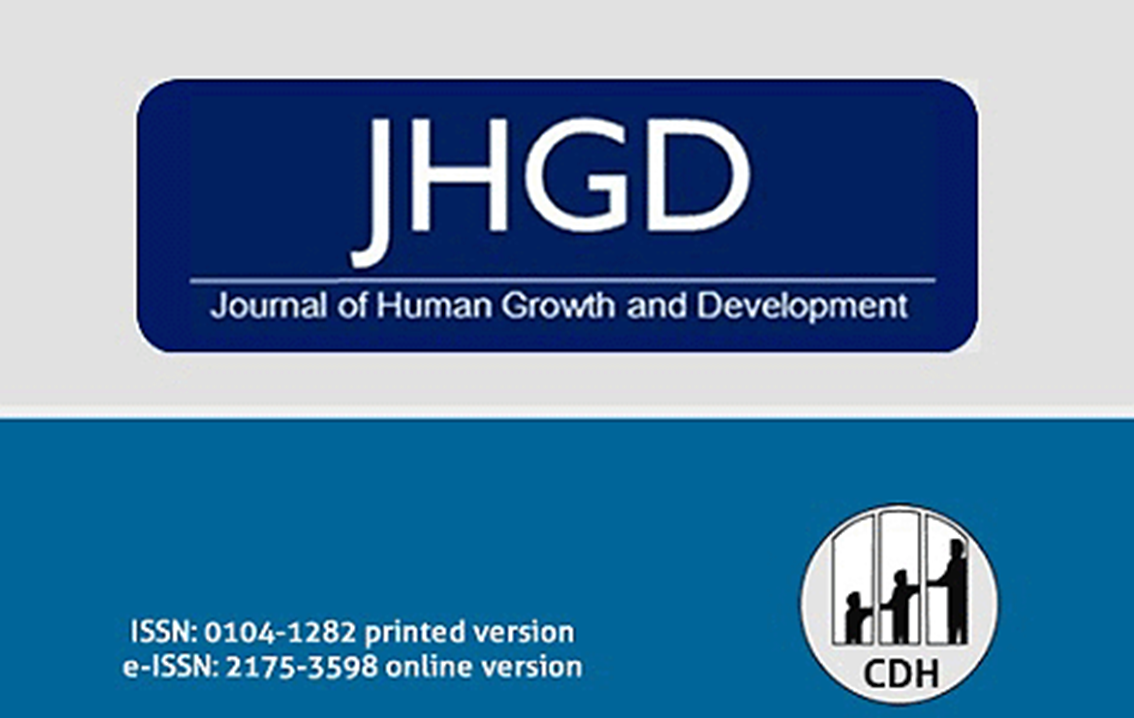Urinary markers of pain in children in neonatal intensive care units: a cross-section study
DOI:
https://doi.org/10.36311/jhgd.v34.15783Keywords:
Neonatal, ICU, pain, IL-8, Cortisol, urineAbstract
Introduction: Repetitive exposition to pain negatively affects newborns development. Procedural pain in newborn in Neonatal Intensive Care Unit (NICU) triggers a series of physiological, behavioral and hormonal disorders that may set off the impairment of the neurological development in preterm infants, who undergo long periods of hospitalization at a moment of physiological immaturity and fast brain development.
Objective: This study aimed not only to observe the pain score in newborns and infants when undergoing painful procedures in neonatal intensive care units but also to analyse urinary IL-8 and cortisol levels at such stressful moments.
Methods: Patients were submitted to venipuncture and to other methods of blood collection. Cortisol and IL-8 levels were measured by immunometric assay and chemiluminescence detection. For the collection of data regarding observation of neonatal pain, the Neonatal Infant Pain Scale was used with immediate results. To describe the qualitative variables, absolute and relative frequencies were used. For the quantitative variables with normal distribution, mean, standard deviation, minimum and maximum were used.
Results: A total of 81 patients were included: 47 were submitted to venipuncture and 36 to other methods of blood collection. Significance for cortisol can be seen (p=0.04); however, IL-8 levels, when associated with the pain scale, were not sensitive enough (p=0.11).
Conclusion: The results showed that cortisol is a better marker for pain than IL-8, and its accumulation in urine may help the detection and interpretation of pain. Conclusion: Based on this information, nurses can step in to reduce the discomfort brought by painful procedures, and thus highlight humanistic practices in nursing assistance.
Downloads
References
Provenzi L, Giusti L, Fumagalli M, Tasca H, Ciceri F, Menozzi G, et al. Pain-related stress in the Neonatal Intensive Care Unit and salivary cortisol reactivity to socio-emotional stress in 3-month-old very preterm infants. Psychoneuroendocrinology 2016;72:161–5. https://doi.org/10.1016/j.psyneuen.2016.07.010.
Walden M, Carrier C. The ten commandments of pain assessment and management in preterm neonates. Crit Care Nurs Clin North Am 2009;21:235–52. https://doi.org/10.1016/j.ccell.2009.02.001.
Holsti L, Grunau RE. Initial validation of the Behavioral Indicators of Infant Pain (BIIP). Pain 2007;132:264–72. https://doi.org/10.1016/j.pain.2007.01.033.
Grunau RE, Whitfield MF, Petrie-Thomas J, Synnes AR, Cepeda IL, Keidar A, et al. Neonatal pain, parenting stress and interaction, in relation to cognitive and motor development at 8 and 18 months in preterm infants. Pain 2009;143:138–46. https://doi.org/10.1016/j.pain.2009.02.014.
De Bernardo G, Riccitelli M, Giordano M, Proietti F, Sordino D, Longini M, et al. Rooming-in Reduces Salivary Cortisol Level of Newborn. Mediators Inflamm 2018;2018:2845352. https://doi.org/10.1155/2018/2845352.
Meniailo ME, Malashchenko VV, Shmarov VA, Gazatova ND, Melashchenko OB, Goncharov AG, et al. Interleukin-8 favors pro-inflammatory activity of human monocytes/macrophages. Int Immunopharmacol 2018;56:217–21. https://doi.org/10.1016/j.intimp.2018.01.036.
Khan J, Hassun H, Zusman T, Korczeniewska O, Eliav E. Interleukin-8 levels in rat models of nerve damage and neuropathic pain. Neurosci Lett 2017;657:106–12. https://doi.org/10.1016/j.neulet.2017.07.049.
Hudson-Barr D, Capper-Michel B, Lambert S, Palermo TM, Morbeto K, Lombardo S. Validation of the Pain Assessment in Neonates (PAIN) scale with the Neonatal Infant Pain Scale (NIPS). Neonatal Netw 2002;21:15–21. https://doi.org/10.1891/0730-0832.21.6.15.
Sarkaria E, Gruszfeld D. Assessing Neonatal Pain with NIPS and COMFORT-B: Evaluation of NICU’s Staff Competences. Pain Res Manag 2022;2022:8545372. https://doi.org/10.1155/2022/8545372.
Deindl P, Unterasinger L, Kappler G, Werther T, Czaba C, Giordano V, et al. Successful implementation of a neonatal pain and sedation protocol at 2 NICUs. Pediatrics 2013;132:e211–8. https://doi.org/10.1542/peds.2012-2346.
Motta G de CP da, Schardosim JM, Cunha MLC da. Neonatal Infant Pain Scale: Cross-Cultural Adaptation and Validation in Brazil. J Pain Symptom Manage 2015;50:394–401. https://doi.org/10.1016/j.jpainsymman.2015.03.019.
Pereira AL, Guinsburg R, de Almeida MF, Monteiro AC, dos Santos AM, Kopelman BI. Validity of behavioral and physiologic parameters for acute pain assessment of term newborn infants. Sao Paulo Med J 1999;117:72–80. https://doi.org/10.1590/s1516-31801999000200005.
Overgaard C, Knudsen A. Pain-relieving effect of sucrose in newborns during heel prick. Biol Neonate 1999;75:279–84. https://doi.org/10.1159/000014105.
Mandrekar JN. Receiver operating characteristic curve in diagnostic test assessment. J Thorac Oncol 2010;5:1315–6. https://doi.org/10.1097/JTO.0b013e3181ec173d.
Field T. Preterm newborn pain research review. Infant Behav Dev 2017;49:141–50. https://doi.org/10.1016/j.infbeh.2017.09.002.
Iwata O, Okamura H, Saitsu H, Saikusa M, Kanda H, Eshima N, et al. Diurnal cortisol changes in newborn infants suggesting entrainment of peripheral circadian clock in utero and at birth. J Clin Endocrinol Metab 2013;98:E25–32. https://doi.org/10.1210/jc.2012-2750.
Okamura H, Kinoshita M, Saitsu H, Kanda H, Iwata S, Maeno Y, et al. Noninvasive surrogate markers for plasma cortisol in newborn infants: utility of urine and saliva samples and caution for venipuncture blood samples. J Clin Endocrinol Metab 2014;99:E2020–4. https://doi.org/10.1210/jc.2014-2009.
Karabela Y, Eliacik M, Kocabora MS, Erdur SK, Baybora H. Predicting the refractive outcome and accuracy of IOL power calculation after phacoemulsification using the SRK/T formula with ultrasound biometry in medium axial lengths. Clin Ophthalmol 2017;11:1143–9. https://doi.org/10.2147/OPTH.S136882.
Dionysakopoulou C, Lianou L, Boutopoulou B, Giannakopoulou M, Vlachioti E, Koumpagioti D, et al. The Role of Substance P, Neurokinin A, Neuropeptide Y, and Cortisol in Assessing Neonatal Pain. Neonatal Netw 2023;42:65–71. https://doi.org/10.1891/NN.2022-0006.
Downloads
Published
Issue
Section
License
Copyright (c) 2024 Oliveira e Souza CS, Salay G, Sousa LVA, Alves BCA, Veiga GL, Gascón TM, Fonseca FLA, Feder D

This work is licensed under a Creative Commons Attribution 4.0 International License.






